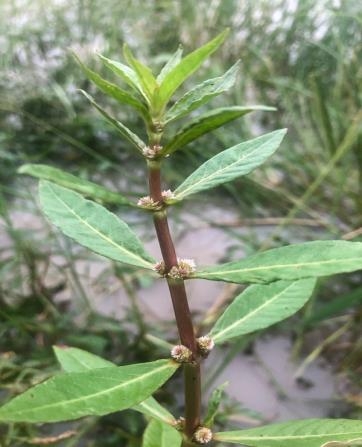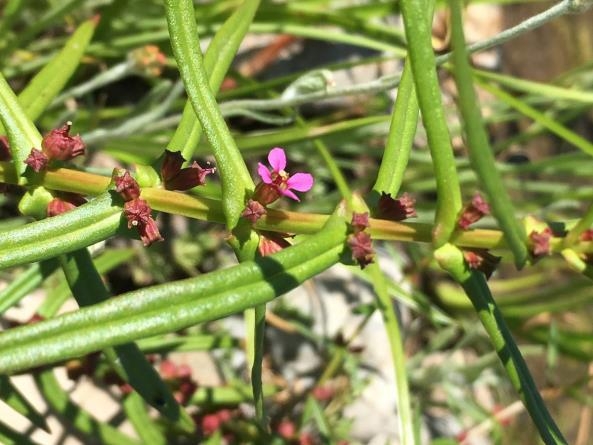
White water fire (Bergia capensis) was found in September of 2023, by the Butte County Agricultural Commissioner's office in a rice field in Butte County. The weed was identified by the California Department of Food and Agriculture (CDFA.) It is the first find of this weed in California, and possibly in the United States. It is native to Africa, southern China, and tropical Asia, and it is known to be in rice fields in Europe, Central and South America, as well as the Caribbean. It was likely transported in seed to rice-growing areas and has been established in those locations for many years.
In Butte County, the weed was only found in one rice field, and the Agricultural Commissioner's office surveyed surrounding rice fields but found no additional infestations. The method of introduction in California is unknown at this point.
It currently has a “Q” rating by CDFA: “An organism or disorder suspected to be of economic or environmental detriment, but whose status is uncertain because of incomplete identification or inadequate information”. At this point, it is not considered a quarantinable pest so if it is found, there is no penalty or restriction for finding it in a field.
Identification
White water fire looks similar to another common rice field weed, redstem (Ammania spp). However, the two species are not from the same plant family and are therefore not closely related. Due to the similarity, white water fire is quite difficult to identify in the field. One of the key distinctions is the thickness of the leaves, which are much broader in white water fire than in redstem. Another key distinction is flower color. The flower color of white water fire is white, whereas redstem can have either purple or red flowers.

Possible control
Currently, no herbicide testing has been conducted in California, as we have recently collected the seed. The University of California Cooperative Extension (UCCE) will be scouting the previously infested field again in 2024, and we will collect more seeds at that time. In other countries, pretilachlor has been used (Parthipan et al, 2013), as has metsulfuron (FMC Corporation, 2022). However, neither of these products are registered in California rice, although some herbicides in the same Mode of Action are registered and may be effective. However, extensive testing with currently registered herbicides, as well as herbicides in the registration pipeline, will need to occur before recommendations can be made.
Currently, the best recommendation for control is to hand-rogue (pull) out the plants. Plants should be removed completely from the field, bagged, and disposed of in the trash. Other recommendations are to thoroughly clean equipment between fields when moving from an infested field to a non-infested field.
Reporting
If you suspect you have this plant in your field, please give your nearest Rice Farm Advisor a call. The best way for us to deal with this weed, including possibly being able to use an herbicide is by knowing the extent of the issue. We can assist with identification, as well as control strategies.
References
FMC Corporation (2022). Sumet Pro Herbicide Label. India.
Parthipan, T., Ravi, V., and Subramanian, E. (2013). Integrated weed management practices on growth and yield of direct-seeded lowland rice. Indian Journal of Weed Science 45(1): 7–11.
Original source: Rice Notes - January 2024 newsletter
Author - CE Rice and Wild Rice Advisor, Master Gardener Advisor, UC Integrated Pest Management Program Afilliate